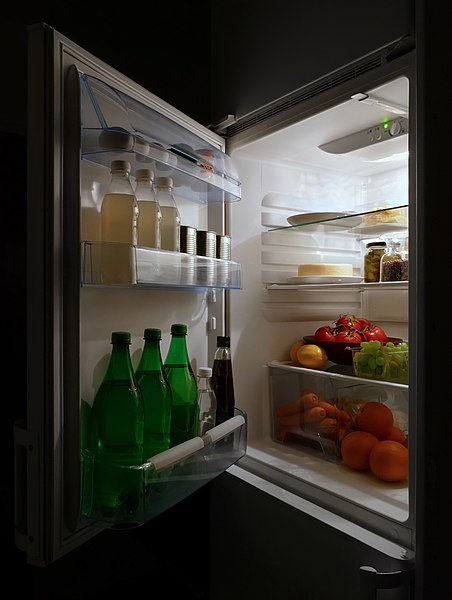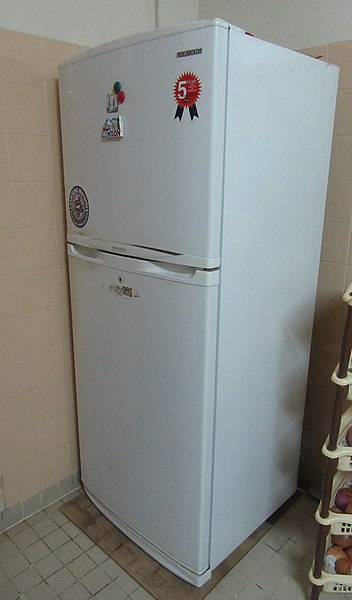An absorption refrigerator is a refrigerator that uses a heat source to provide the energy needed to drive the cooling process. Solar energy, burning a fossil fuel, waste heat from factories, and district heating systems are examples of convenient heat sources that can be used. An absorption refrigerator uses two coolants: the first coolant performs evaporative cooling and then is absorbed into the second coolant; heat is needed to reset the two coolants to their initial states. Absorption refrigerators are commonly used in recreational vehicles (RVs), campers, and caravans because the heat required to power them can be provided by a propane fuel burner, by a low-voltage DC electric heater or by a mains-powered electric heater. Absorption refrigerators can also be used to air-condition buildings using the waste heat from a gas turbine or water heater in the building. Using waste heat from a gas turbine makes the turbine very efficient because it first produces electricity, then hot water, and finally, air-conditioning—trigeneration.

Domestic absorption refrigerator. 1. Hydrogen enters the pipe with liquid ammonia 2. Ammonia and hydrogen enter the inner compartment. Volume increase causes a decrease in the partial pressure of the liquid ammonia. The ammonia evaporates, taking heat from the liquid ammonia (ΔHVap) lowering its temperature. Heat flows from the hotter interior of the refrigerator to the colder liquid, promoting further evaporation. 3. Ammonia and hydrogen return from the inner compartment, ammonia returns to absorber and dissolves in water. Hydrogen is free to rise.
Thermal image of a Domestic absorption refrigerator of a comparable type to the one in the labelled image above. Colour indicates relative temperature: blue=cold, red is hottest. The heat source (7) is contained entirely within the insulation section (6).
A refrigerator, colloquially fridge, is a commercial and home appliance consisting of a thermally insulated compartment and a heat pump that transfers heat from its inside to its external environment so that its inside is cooled to a temperature below the room temperature. Refrigeration is an essential food storage technique around the world. The low temperature lowers the reproduction rate of bacteria, so the refrigerator reduces the rate of spoilage. A refrigerator maintains a temperature a few degrees above the freezing point of water. The optimal temperature range for perishable food storage is 3 to 5 °C. A similar device that maintains a temperature below the freezing point of water is called a freezer. The refrigerator replaced the icebox, which had been a common household appliance for almost a century and a half. The United States Food and Drug Administration recommends that the refrigerator be kept at or below 4 °C (40 °F) and that the freezer be regulated at −18 °C (0 °F).

Food in a refrigerator with its door open
Exterior of a modern refrigerator
Ferdinand Carré's ice-making device
Production of refrigerators in France, ca. 1950s






